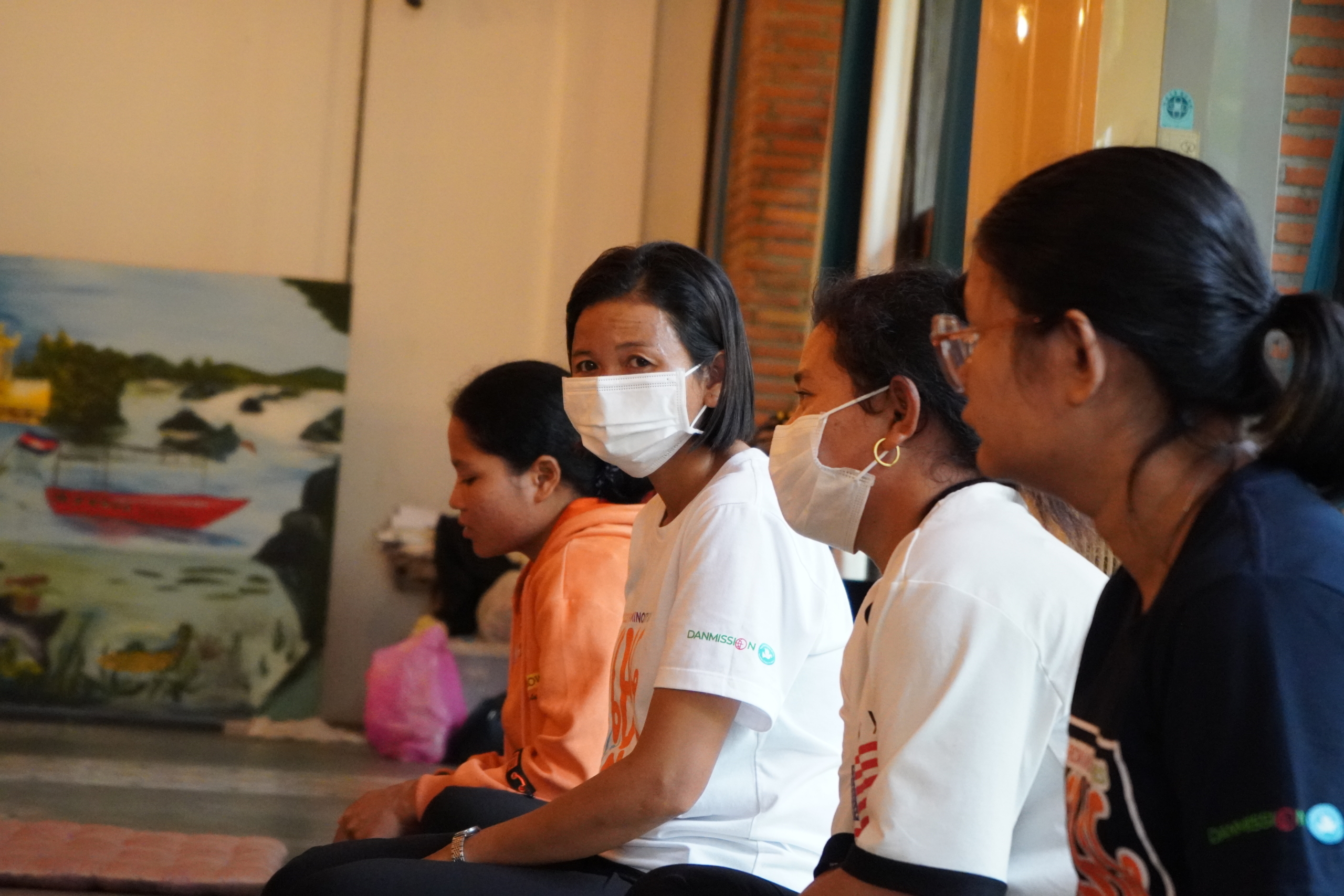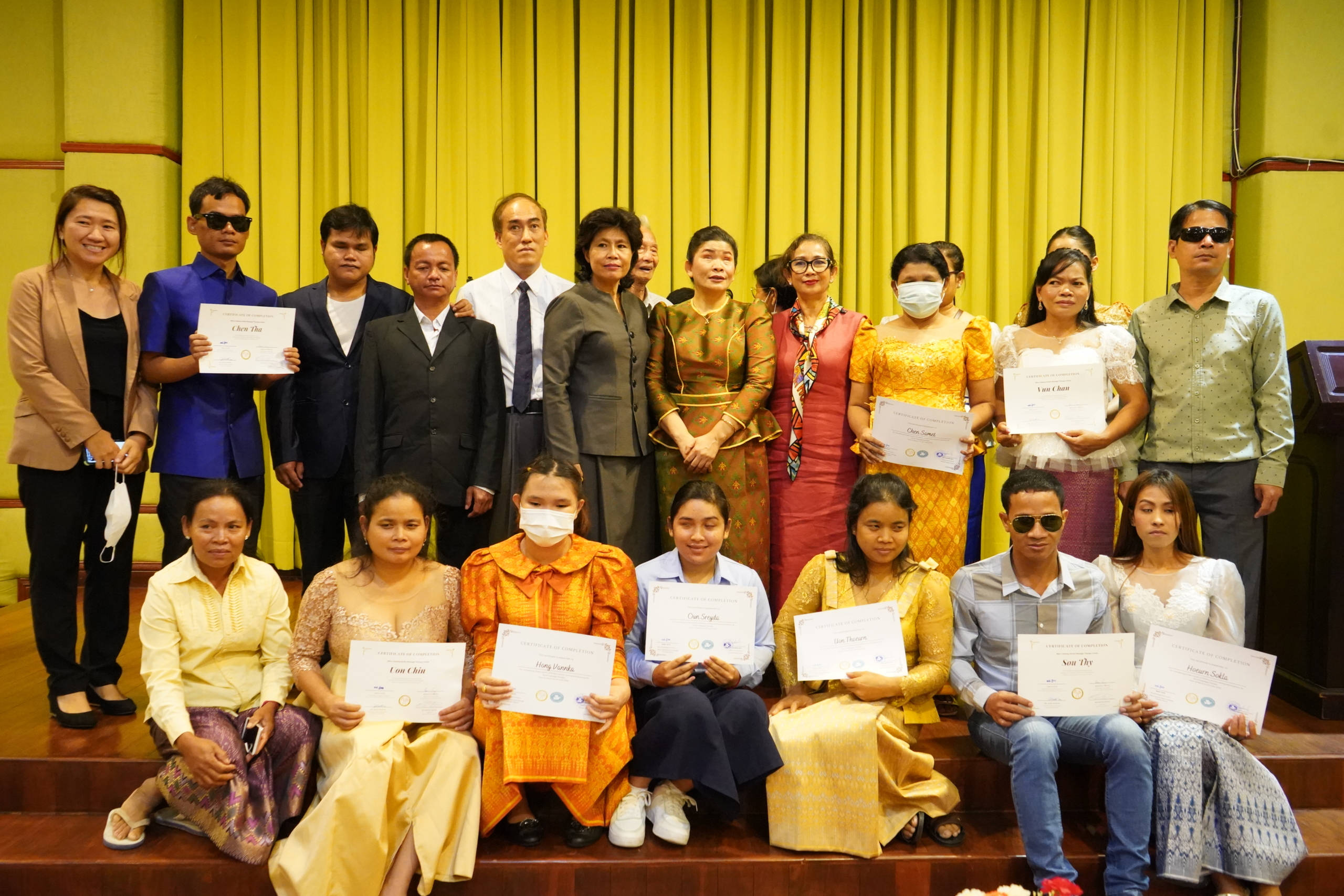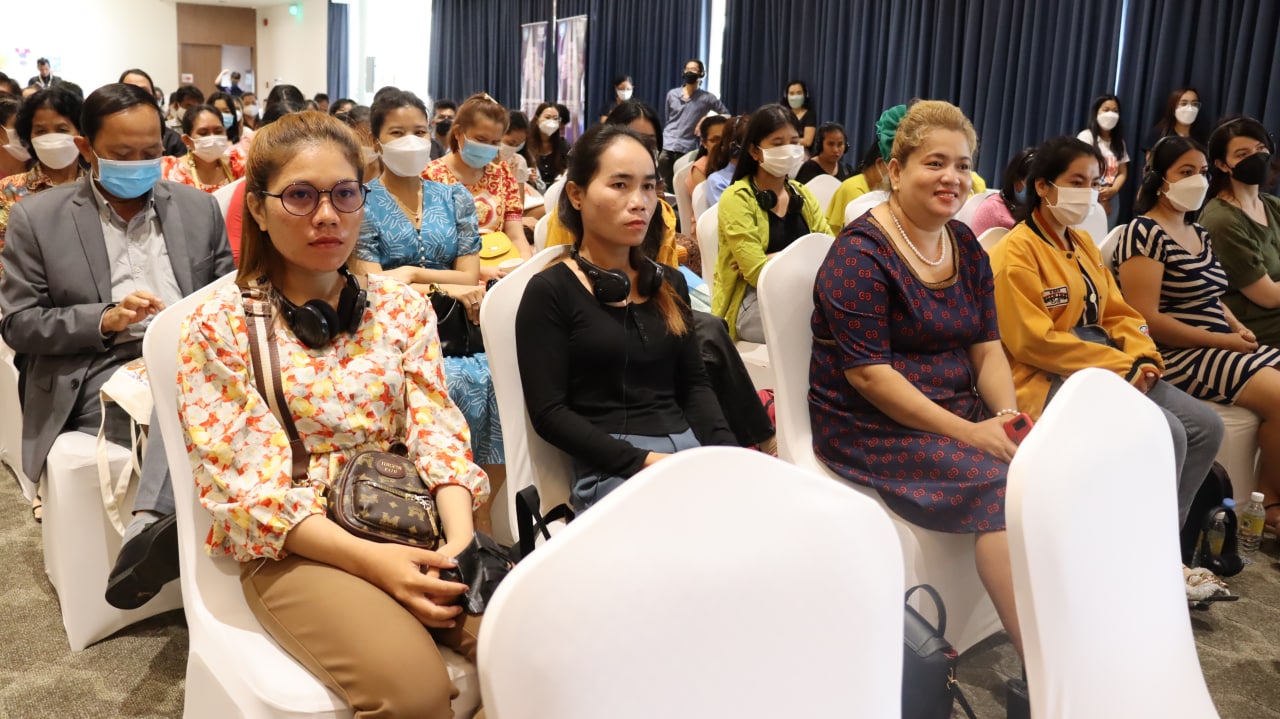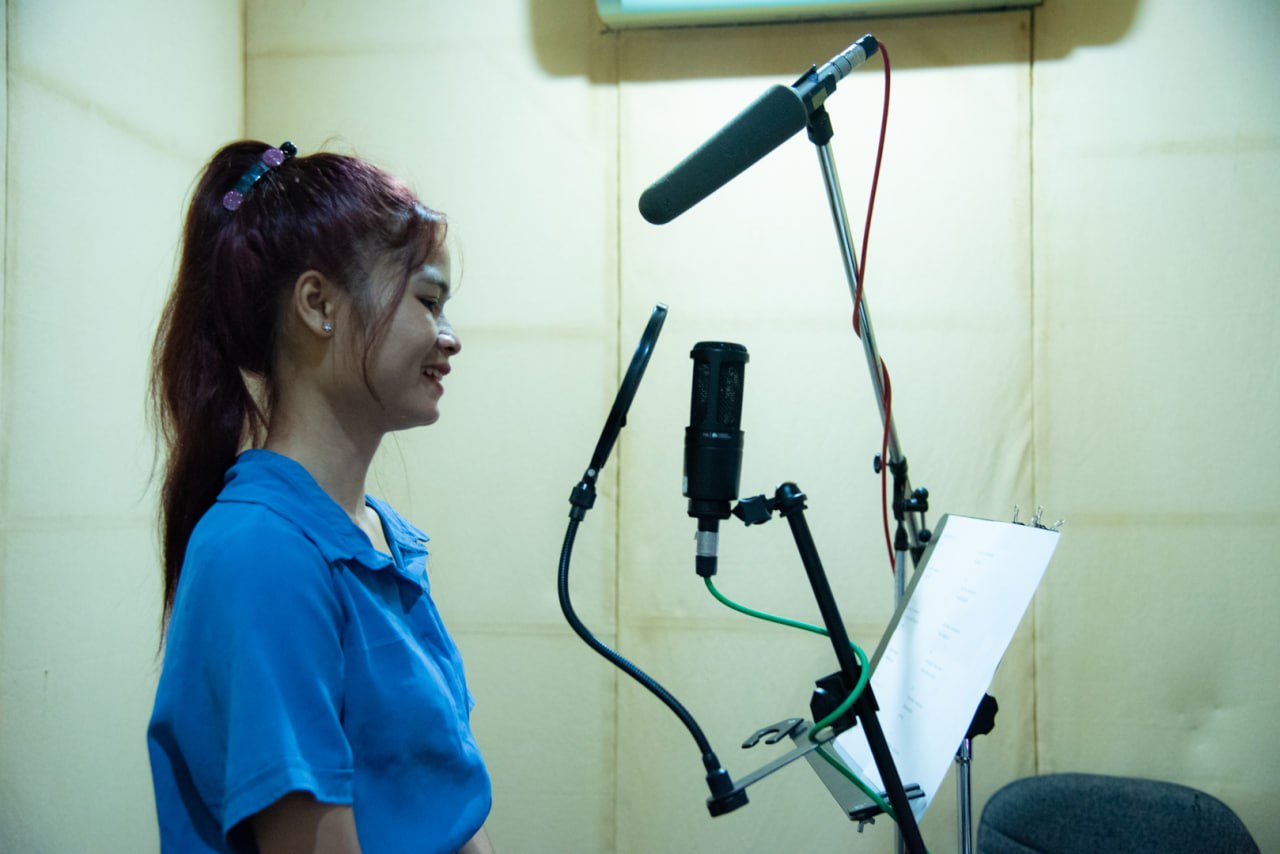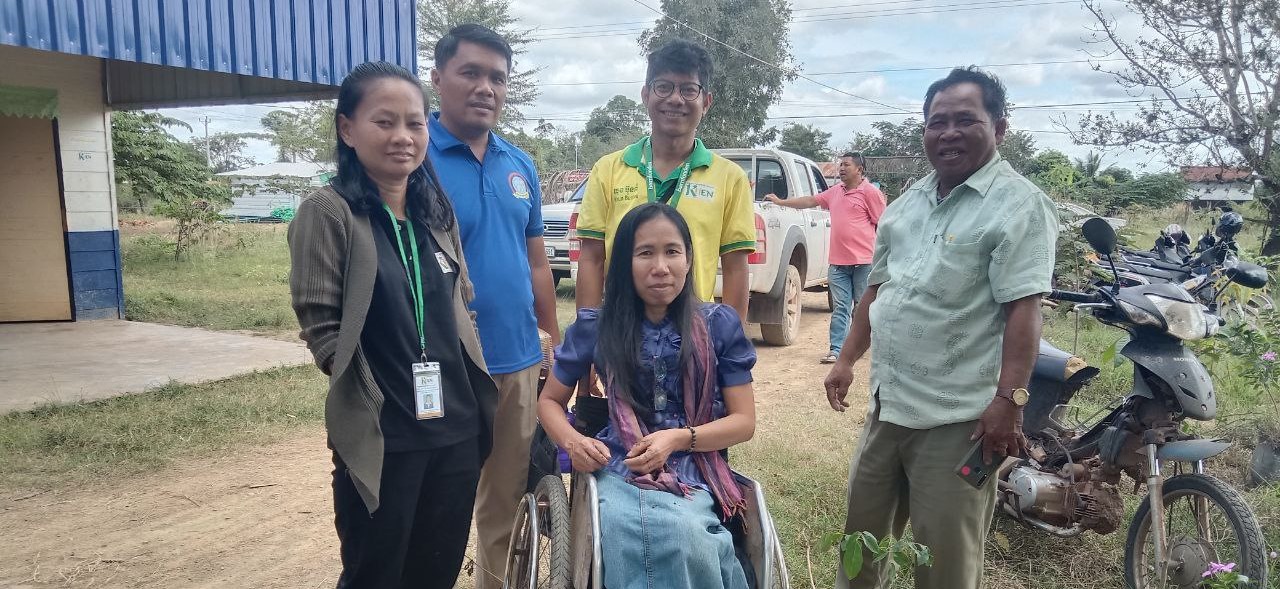Experiencing Local Life: A Field Trip to Putraeng Village in Mondulkiri
by Saophorn Phoeng, Learning, Linking and Amplifier Officer, Voice Cambodia
Have you ever had the chance to learn and experience a new way of life? To explore different cultures and traditions and discover nature’s beauty through a field trip? If so, you might already have an idea what’s awaiting you on your journey with me to Putraeng Village. Getting to immerse myself in the culture and lifestyle of an Indigenous community is an experience that cannot be missed. On April 28th, 2023, I had the great honor to travel with a diverse group of minority women/inter-ethnic youth (Cham and Vietnamese), Indigenous women, blind women, Khmer and LGBTI, senior citizens and community members together with the Women Peace Makers (WPM). They organised a field trip to an Indigenous community located in the Putraeng Village, Dak Dam Commune of Mondulkiri Province, home to the Indigenous Pu Bunong community with a unique and vibrant culture and warm tropical climate.
On this field trip, we explored the cultural diversity and natural beauty of Putraeng Village. We also had the chance to participate in activities such as observing traditional performances. Let us take an in-depth look at it; join me and let us embark on an exploration that is certain to be both educational and inspiring!
The participant boarded the bus at the WPM office and travels to Mondukrir. On the bus, breakfast was provided. Other activities during the brief journey included playing games, conversing, singing and making multiple stops for restroom breaks and lunch. After a longer-than-anticipated trip, we arrived at 5:30 pm and immediately started preparing dinner together. Participants form the Kratie and Ratanakiri provinces also departed from their destination. The whole trip takes about three days and two nights, during which everyone stayed with the home community hosted by the local youth – so packing your belongings! Everyone shares work, cooking, dishwashing, and more.
Putraeng Village/s Dak Dam Commune boasts a variety of activities for any visitor, ranging from cultural encounters to views. Upon entering the village, a detailed insight into the traditional way of living by the Indigenous people welcomes you. This includes gaining a greater understanding of their ethics and beliefs; getting to know their ways of communicating; and learning about their traditional customs from daily life, such as food production, domestic duties, and social interaction. First and foremost, you will know how the indigenous people live off the land and use natural resources. You may be surprised that they still observe ancient traditions in daily life.
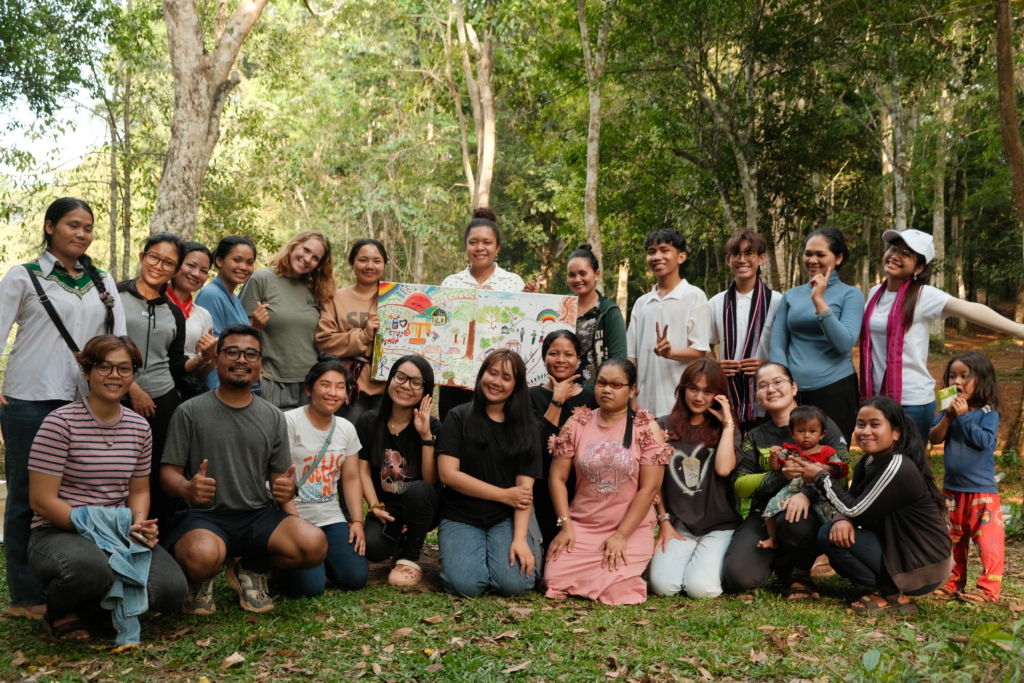
This was us during the trip!
First, let’s get to know the local community through group meetings and sharing their locality:
- Routine jobs include cattle farming, crop farming (cassava, pepper, and cashews), fishing and non-forest timber products (resins, rattan) .
- You can spend time walking through verdant jungles filled with fascinating wildlife, or cool off with a quick dip in one of the province’s beautiful waterfalls.
- The housing architectures are wooden, lifted a few meters from the floor using stilts. The space underneath the house is used for storage as a space to work, rest, cook, or shelter livestock.
- Funerals vary between indigenous groups. For example, the dancing at Jaray’s burial symbolises their attempt to let go of their sadness (only the locals and family are not dancing). Pu Bunong on the other hand holds a ceremony without dancing or music at the funeral.
- Conflict and violence are resolved through mediation by a senior or older person. This puts women who live with husbands under pressure, notwithstanding possible desire for divorce. Negotiations to eliminate violence set pressure on women who felt they had a tense or abusive relationship with their spouses.
- Faith and belief in rituals to better understand how these activities are conducted in a communal setting. Exchanging ideas with locals while respecting their beliefs is a practice. Besides that, villagers continue to uphold them as part of their cultural heritage and identity heavily rooted in spirituality. As such, it’s worth digging deeper into these cultures.
- Traditional weaving is still maintained, yet only older people know how to do it. At the same time, the younger ones aren’t interested in it, and sadly, this seems to be not passed down through generations of their local wisdom. You can then purchase a fabric – a great reminder of your experience!
- The villagers in Putraeng Village also use traditional techniques to make local wine, especially for their local ceremonies.
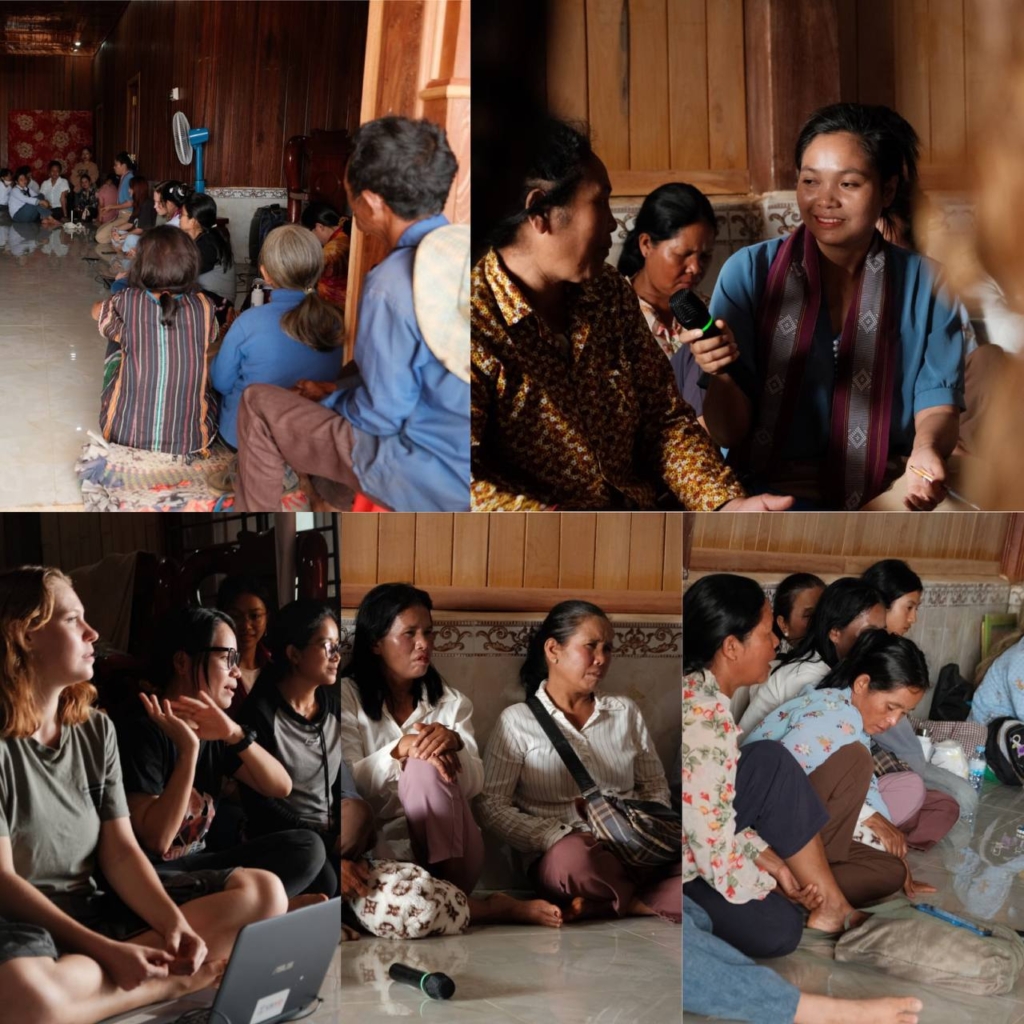
During a local community meeting
In afternoon is a truly a unique experience: talking with villagers and seeing what life is like for them. In addition, understanding how community members work together in solidarity to help one anothe through time-honored techniques by indigenous peoples from the highlands. It is also a rare glimpse of life in the village, with rich cultural vibes only found there. Everyone gets to listen to the elderly speaking and doing a house tour and finding items that villagers still uphold as they are a vital component of their spiritually based cultural history and identity.
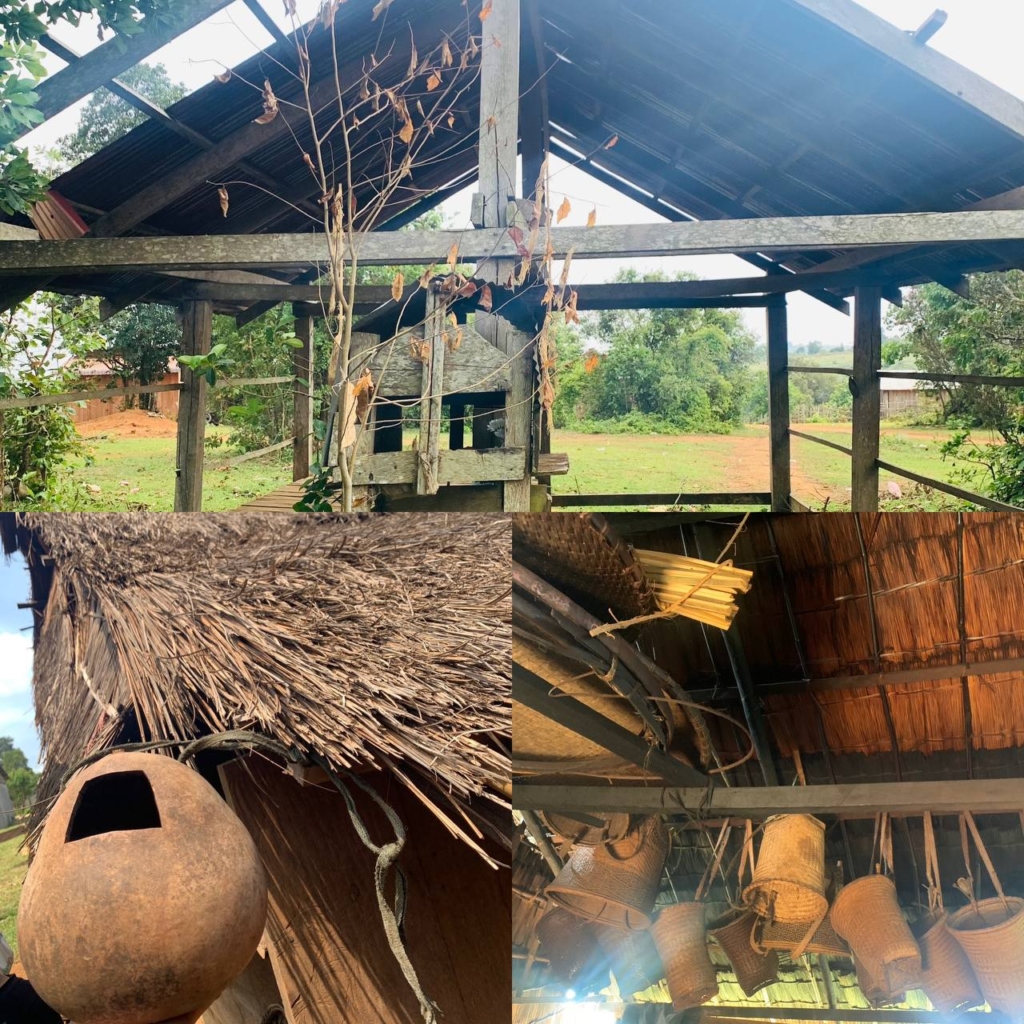
During a village walk to learn about faith and belief, weaving, and more.
Afterwards, we embraced nature by trekking through the lush jungle and participating in bird singing and a waterfall visit. Finally, each group is given a canvas to depict the exposure trip’s results: What kind of community do you hope to see?
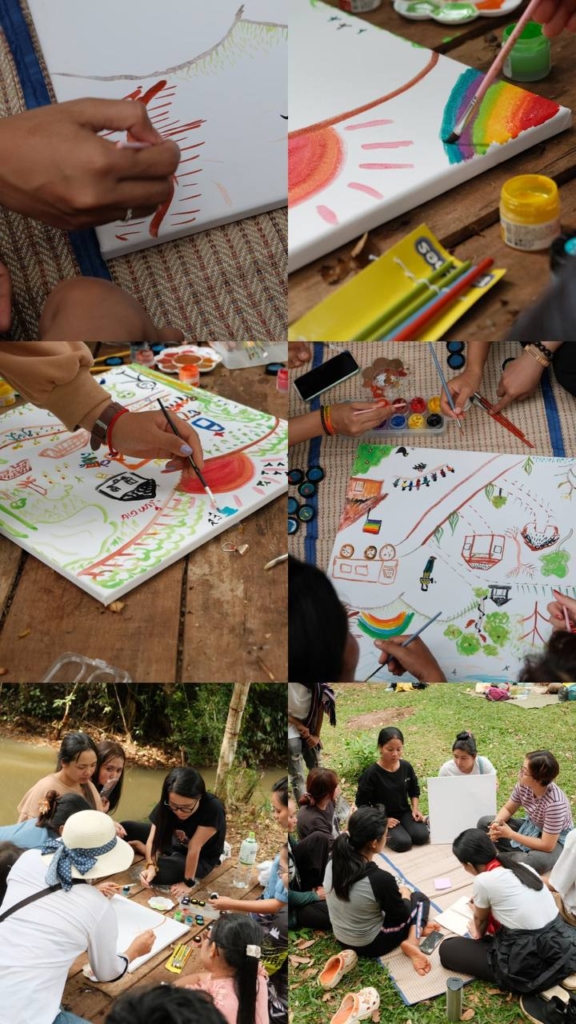
Everyone draws the community where they wish to see their contribution
The night’s cultural session involved participating in traditional ceremonies and dances with traditional instruments such as the gong and having the chance to listen to songs almost forgotten, sung by older people.
Here are some impressions and reflections from those who came with us:
“Discover the beauty of Putraeng Village on this memorable field exposure trip! From learning about traditional customs up close and personal, engaging in meaningful conversations with locals, or simply observing everyday village life, there’s something for everyone to understand about the IP [indigenous] community.”
“The field exposure trip to Putraeng Village was an enriching experience for all involved. Participants could stay with local youth and engage in activities such as cooking, dishing, and working collaboratively in a familial atmosphere. They also gained invaluable insight into the customs and traditional wisdom of the Indigenous community and cultural immersion. Undeniably, it was an unforgettable day! Although I wish this experience could have lasted longer, more stories remain to be discovered and connected in our upcoming trips.”
“Taking village walks during the trip sparked curiosity, observation, inquiring, clarifying, and engaging experiences with the Putraeng community – visiting a place, learning many things to understand, and linking various things significantly. Sharing experiences, knowledge, and culture has helped build good community relations. In addition, everyone could learn the Indigenous community’s insightful, local wisdom and geographical location and its customs, traditions, beliefs, and faiths.”
“Visiting a place, learning many things to understand —a fantastic opportunity to learn and participate with their lifestyles and culture.”
“A Journey into the Heart of Mondulkiri Province, Putraeng Village, which I increase my insight and eye for practical experiences from my study and reading books.”
“It was such a great trip! We stayed with the home community for three days and two nights, and everyone felt right at home. We got to experience authentic village life —cooking, cleaning, working together, and sharing stories. It was like we had all known each other for a long time – we were like one big family!”
“This is more than happy memories—it’s also an opportunity to gain actual exposure to one of the Indigenous populations. Here, learn about their land rights struggles and their fight for justice against massive corporate interests determined to expand into their sacred lands. However, still gab in intersectionality when we spoke about LGBT who is IP; they didn’t get to understand who LGBTI is.”
This educational trip to Putraeng Village, Dak Dam Commune, was priceless in many ways. Not just for what we learned about the area and its residents but also for the more profound knowledge— it can be a great way to explore, learn and grow. The villagers find comfort and delight in the ease of their daily lives, as well as in generosity, despite the hardships of life. It’s a journey that teaches us about life in the villages of Dak Dam and highlights the importance of preserving those unique cultures and traditions for generations to come. It’s a chance to embrace different cultures, create memories that will last a lifetime, and ultimately understand the importance of respecting each other’s differences and diversity.

